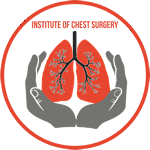Tracheal stenosis is a medical condition characterized by the narrowing or constriction of the trachea, which is the windpipe responsible for carrying air to and from the lungs. This narrowing can result in breathing difficulties, reduced oxygen supply, and a significant impact on an individual’s quality of life. In this comprehensive guide, we will explore the various treatment options available for tracheal stenosis, focusing on medical and surgical interventions that aim to alleviate symptoms and restore normal respiratory function.
Understanding Tracheal Stenosis
Tracheal stenosis can occur due to various factors, including traumatic injury, prolonged intubation, infections, or inflammatory conditions. The severity of the condition can vary from mild to critical, and early detection is crucial to prevent complications.
Symptoms of tracheal stenosis may include:
- Breathing difficulties: Shortness of breath, wheezing, or noisy breathing.
- Chronic cough: Persistent cough that does not respond to usual treatments.
- Decreased exercise tolerance: Inability to engage in physical activities due to breathing limitations.
- Frequent respiratory infections: The narrowed trachea can increase susceptibility to infections.
- Stridor: A high-pitched sound during inhalation, indicating narrowed airways.
If you or a loved one experiences any of these symptoms, seeking prompt medical attention is essential for an accurate diagnosis and appropriate treatment.
Diagnosis of Tracheal Stenosis
When a patient presents with symptoms suggestive of tracheal stenosis, the healthcare provider, often an otolaryngologist (ear, nose, and throat specialist), will conduct a thorough evaluation. Diagnostic procedures may include:
- Medical History and Physical Examination: The doctor will review the patient’s medical history, symptoms, and conduct a physical examination, including listening for abnormal breath sounds and stridor.
- Imaging Studies: X-rays, CT scans, or MRI scans are used to visualize the trachea and assess the extent of the narrowing.
- Bronchoscopy: A flexible tube with a camera is inserted into the airway to directly visualize and measure the tracheal stenosis. This procedure helps in confirming the diagnosis and determining the location and severity of the narrowing.
Treatment Options for Tracheal Stenosis
The treatment approach for tracheal stenosis depends on various factors, such as the severity of the narrowing, its location, and the patient’s overall health. The primary goal of treatment is to widen the trachea and improve airflow, relieving symptoms and enhancing the patient’s quality of life. Below are the main treatment options for tracheal stenosis:
-
- Medical Management: In cases of mild tracheal stenosis, medical management may be sufficient to alleviate symptoms and prevent progression. This approach may involve:
- Bronchodilators: Medications that relax the airway muscles, helping to widen the trachea and improve breathing.
- Corticosteroids: Anti-inflammatory drugs that can reduce inflammation in the airways.
- Antibiotics: If the stenosis is caused by an infection, antibiotics may be prescribed to treat the underlying cause.
While medical management can be effective for some patients, it may not be enough for those with moderate to severe tracheal stenosis.
- Endoscopic Treatments: Endoscopic procedures are minimally invasive techniques that can be used to directly access the trachea and address the narrowing. These procedures are typically performed by interventional pulmonologists or otolaryngologists and include:
- Balloon Dilation: A deflated balloon is inserted into the narrowed trachea and then inflated to widen the airway. This technique may need to be repeated periodically to maintain the patency of the trachea.
- Laser Therapy: A laser is used to remove the scar tissue or other obstructions in the airway, effectively widening the trachea.
- Stent Placement: In some cases, a stent (a small tube) may be inserted into the trachea to keep it open and improve airflow.
Endoscopic treatments can provide significant relief for patients with certain types of tracheal stenosis. However, they may not be suitable for all cases, and the effectiveness can vary depending on the severity and location of the stenosis.
- Tracheal Resection and Reconstruction: For patients with severe or complex tracheal stenosis, surgical intervention may be necessary. Tracheal resection and reconstruction involve removing the narrowed portion of the trachea and reconnecting the healthy segments. This procedure is often performed in specialized centers by experienced thoracic surgeons.
- Medical Management: In cases of mild tracheal stenosis, medical management may be sufficient to alleviate symptoms and prevent progression. This approach may involve:
While tracheal resection and reconstruction offer the most permanent solution for tracheal stenosis, it is a complex surgery that carries potential risks and requires careful evaluation of the patient’s condition and overall health.
- T-Tube Placement: In some cases, when the tracheal stenosis is severe or long, a T-tube may be inserted into the trachea to maintain its patency temporarily. This tube allows breathing through the narrowed area while the underlying cause is treated or while waiting for a definitive procedure.
Conclusion
Tracheal stenosis is a challenging condition that can significantly impact a patient’s respiratory function and quality of life. Timely diagnosis and appropriate treatment are essential to alleviate symptoms and prevent complications.
The treatment of tracheal stenosis varies based on the severity of the narrowing, its location, and the patient’s overall health. Medical management, endoscopic treatments, tracheal resection, and reconstruction, and T-tube placement are some of the available options, each with its own benefits and considerations.
Patients with tracheal stenosis should work closely with a multidisciplinary team of healthcare professionals, including otolaryngologists, interventional pulmonologists, and thoracic surgeons, to determine the most suitable treatment plan for their specific condition.
As with any medical condition, individual cases may vary, and treatment decisions should be made in consultation with a qualified healthcare provider. If you or someone you know is experiencing symptoms of tracheal stenosis, seek medical attention promptly for proper evaluation and personalized care.







